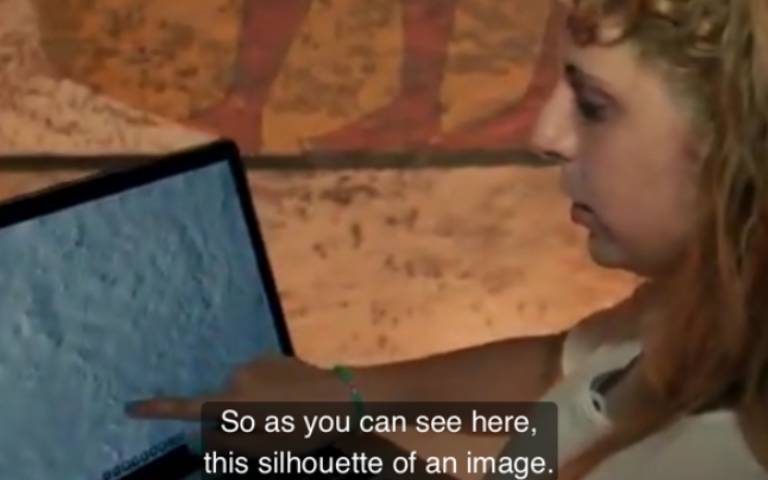Student Aliaa Ismail investigates the mystery behind Tutankhamun’s tomb on Channel 4
8 April 2019

Aliaa Ismail, MRes SEAHA student and Director of the Theban Preservation Initiative, has recently been featured in two TV documentaries: “Lost Treasures of Egypt” and “Secrets of Egypt: the valley of the kings.”
Aliaa is leading her team to investigate Tutankhamun’s tomb, which is located in the Valley of Kings, in Luxor on the west bank of the Nile River, 300 miles south of Cairo. Archaeologists come from all over the world to unlock the secrets hidden within the Valley of Kings, including the tomb of Tutankhamun which is considered one of the greatest finds in Egyptian archaeology.
Archaeologists have found 65 tombs in the valley, however, unfortunately, all of the treasure in the tombs has since been robbed except for one: the tomb of Tutankhamun. Tutankhamun’s tomb was first discovered by the British explorer Howard Carter in 1922 after five years of searching. It was buried deep underground, covered by rubble and debris, which archaeologists believe is the reason why the tomb raiders were unable to rob its contents. The treasures found in the tomb were unlike anything seen before. They found over five thousand priceless artefacts, including golden statues. In addition, the Pharaoh’s mummy was wearing a golden death mask inside a coffin made of one hundred kilograms of solid gold, making the young Pharaoh the most famous Pharaoh of ancient Egypt.
As an Egyptologist, Aliaa and her team reviewed the scanned walls of Tutankhamun’s burial chamber and found remarkable discoveries. Looking at the 3D scan data void of colour, revealed the slightest indentations in the surface of the wall. Examining the texture of the walls of burial chamber, Aliaa’s team were able to conclude that Tutankhamun’s burial was rushed. The plaster had impressions created by brush strokes in the same indentation as the painted wall, showing that the workmen and painters painted directly on the plaster before waiting for it to dry.
Links
- Watch the National Geographic document trailer on 'Lost Treasures of Egypt'
- Watch the Channel Four document trailer on 'Lost Secrets of Egypt‘s Valley of the Kings'
 Close
Close

